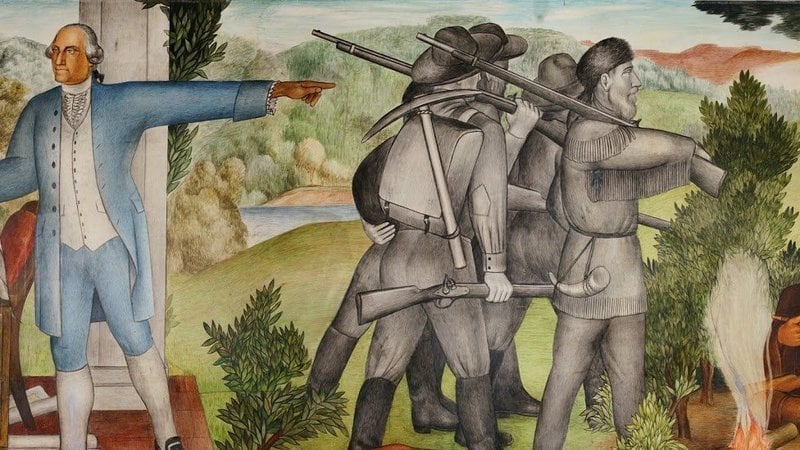
The San Francisco school board has reversed a controversial decision to remove a historic fresco series of the life of George Washington from the local George Washington High School.
In 2019, over concerns that children could be triggered by the paintings’ content, the school board voted to remove the mural from view. At issue were depictions of the nation’s first president owning enslaved Black people and white men stepping over the dead body of a Native American.
Titled “The Life of George Washington,” the 1,600-square-foot series of 13 paintings by Victor Arnautoff was completed in 1934 as part of the Works Progress Administration, a New Deal program to employ out-of-work artists. Arnautoff achieved both professional success and local fame, working as an assistant to the great Mexican Muralist Diego Rivera.
“These New Deal murals have aesthetic and historical importance in their own right,” Michele H. Bogart, an art historian who had spoken out in favor of preserving the painting, told the New York Times. “George Washington students can only benefit from the continued educational opportunities provided by seeing these compelling paintings firsthand, thus permitting them to see and think for themselves.”
Detail of Victor Arnautoff, The Life of George Washington (1934).
The murals’ opponents had claimed that the art glorified “slavery, genocide, colonization, manifest destiny, [and] white supremacy.” But the decision to remove the mural was immediately met with opposition, with 400 writers and academics calling for the paintings to remain on view as a teaching tool, and arguing that the artist’s intent had been to criticize the legacy of racisim and colonialism.
The controversy sparked a national debate about how to depict historical figures with troubling aspects of their biographies in educational settings. Should children walking to class be confronted by the ugly truths of American history? Would removing the art be an act of censorship that could keep students from learning important lessons from the past?
Actor Danny Glover, a former student at the school, called for their preservation, saying “to destroy them or block them from view would be akin to book burning.”
There was also a legal challenge in the courts, with a state judge ruling that deciding to remove the painting without first going through an environmental review of the plan was a violation of California law.
Wednesday’s vote was four to three in favor of overturning the previous decision—but did not rule out changing its mind again in the future. The school board did respond to a request for comment.